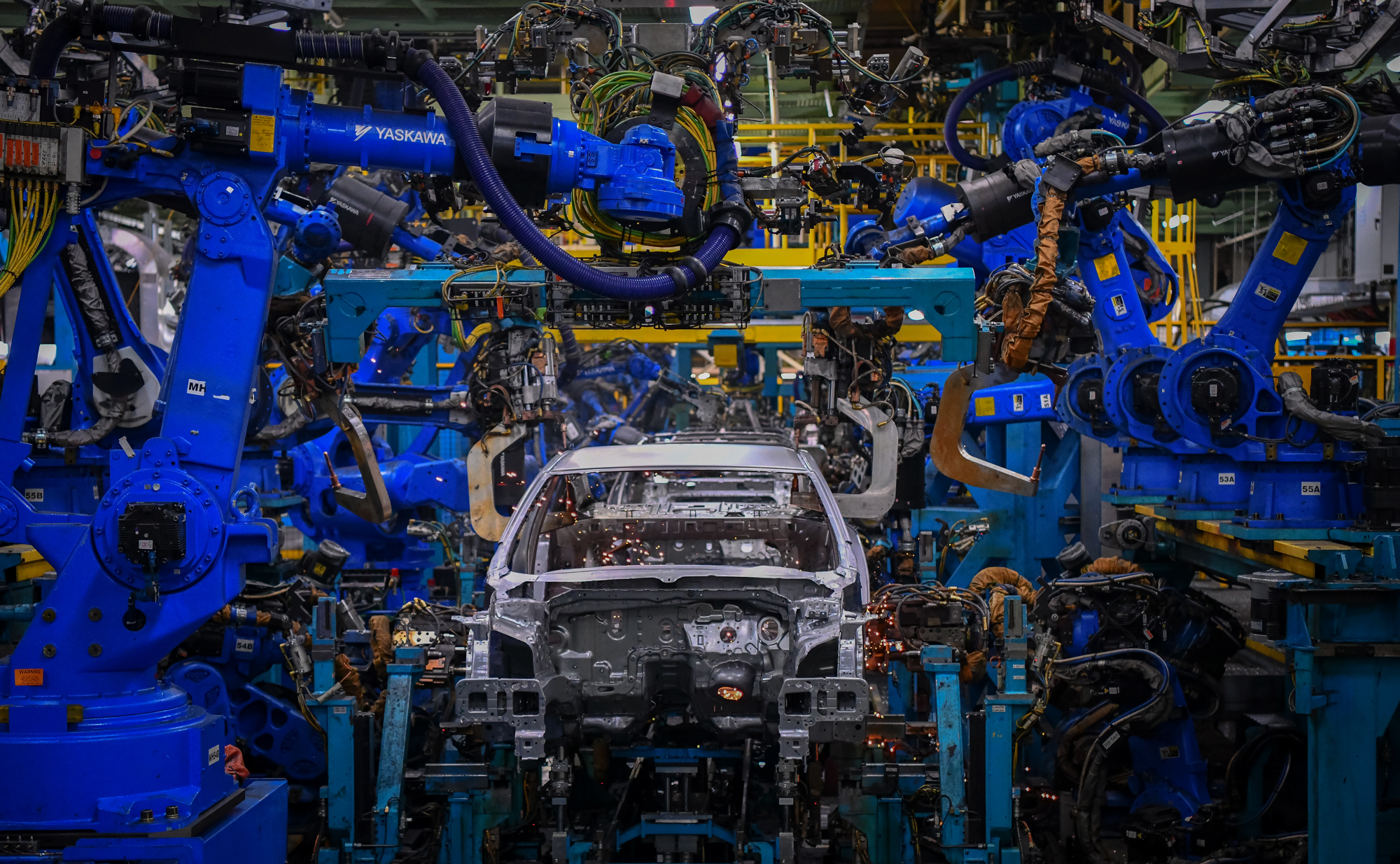
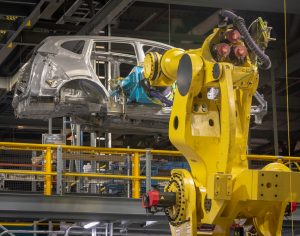
Photo Credit: Honda of Canada Mfg.
Honda of Canada Manufacturing uses preventative and predictive maintenance to ensure production keeps moving.
Back in 1986, Honda Motor Company became the first Japanese automotive manufacturer to build a production plant in Canada, creating Honda of Canada Manufacturing (HCM). The plant in Alliston, Ontario began by building the Honda Accord mid-size sedan, a popular vehicle that, while no longer produced at the plant, is still being sold.
Today, the plant builds two of its most popular models, the compact Honda Civic Sedan and Coupe (and the Si variants), and in a world increasingly dominated by SUVs and crossovers, the CR-V. The plant also has an engine production facility, which builds four-cylinder engines (2.0 litre and 2.4 L), used at HCM as well as at a plant in Indiana.
In all, 400,000 vehicles and 260,000 engines are produced annually. Amazingly, when the plant first opened, it produced eight vehicles per day. Today that number has increased just a bit; it’s now at 820 per day.
What, exactly, is done at the plant?
The operations performed range drastically, but here are a few examples: steel blanking, stamping, welding, painting, plastic injection moulding, aluminum casting, aluminum machining, ferrous machining, vehicle sub-assembly and assembly, engine assembly, vehicle testing, and quality assurance.
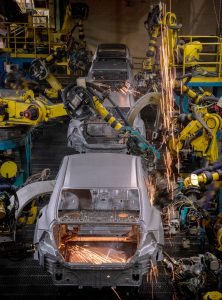
Photo Credit: Honda of Canada Mfg.
Just how much space does it take to build the vehicles and engines? The plant is four million square feet and sits on 890 acres of land. In all, it has received $4.7 billion in capital investment and employs over 4,000 people.
An operation of this size and scope requires a lot of maintenance. With so many machines, moving parts, robots, and so on, the potential for downtime is ever-present. The maintenance team at HCM is tasked with making sure that downtime is as close to zero as possible.
To find out how that is accomplished, MRO spoke with Mike Riddall, CMRP, CRL, Equipment Service Leader, Technical Planning Department, HCM.
MRO: How many robots do you have at the plant?
Riddall: We have over 1,100 robots on campus, with our welding departments having the highest robot density with approximately 800 in total. The robots used have payload capacities ranging from four to 900 kilograms. Robots are used for a combination of material handling, welding, painting, adhesive dispensing, inspection, grinding, and fastening applications. Several different manufacturers including ABB, Fanuc, and Yaskawa make the robots in use.
MRO: What machines are used at the plant?
Riddall: Many different classes of asset types are utilized to manufacture our products.
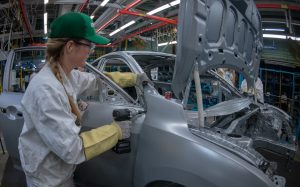
Photo Credit: Honda of Canada Mfg.
The most common asset classes include robots, conveyors, parts transfers and lifts, presses and extrusion machines, pumps, tanks, CNC machines, fastening tools, compressors, and a variety of custom testing and inspection equipment.
In all, we have over 60,000 assets listed within our Computerized Maintenance Management Software, and a significant quantity of these have defined maintenance strategies developed to increase the Mean Time Between Failure (MTBF) rate and extend the usable asset life.
MRO: What is maintenance, repair, and overhaul like on the machines?
Riddall: Assets with maintenance plans established use several different strategies to maintain their intended functions.
These strategies include:
• Preventative maintenance (PM): these are tasks that consist of cleaning, lubrication, inspection and scheduled component replacement.
• Predictive maintenance (PdM): these tasks utilize a combination of tools to measure the condition of the equipment by sampling characteristics like heat, torque, lubrication contamination, vibration, or sound and looking for changes in the reading that would indicate a pending failure. If a change is detected, follow-up investigation activity is assigned. This is a cost-effective solution to reduce high-risk failures for critical assets like compressors, presses, and large body lifters.
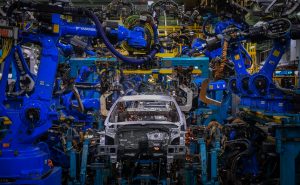
Photo Credit: Honda of Canada Mfg.
• Scheduled overhauls are also utilized to refresh the condition of the asset and extend usable life. This is reserved for larger or critical assets that are not economical to replace or have become obsolete. The decision to overhaul is based on several factors, including the asset’s cost to maintain and its MTBF performance.
Most scheduled maintenance is performed on weekends or during nonproduction times (midnight shift), with the exception of some PdM measurements, which are performed while production is running.
The majority of PM work takes one hour or less to complete per job, and we try to limit the maximum duration to four hours or less. Overhauls are generally scheduled for weekends or scheduled plant shutdowns and require many weeks of preplanning and preparation to execute without error.
MRO: Do you have dedicated people handling MRO for the plant?
Riddall: Yes. We have a dedicated department that manages our site MRO inventory. We also have auto-dispensing machines for many smaller components to allow our production departments swift and easy access.
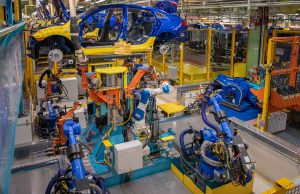
Photo Credit: Honda of Canada Mfg.
MRO: What would you say is the biggest expense in terms of MRO?
Riddall: For planned maintenance like PMs: equipment filters, flexible cables and batteries represent consistent transaction quantities. For unplanned maintenance (breakdowns): end-of-arm tooling utilized on robots and robot internal components can represent a significant cost.
MRO: How often are machines replaced?
Riddall: Jigs, dies, moulds, and tooling customized to the model of vehicle being produced are replaced every major model change or approximately every four to five years. For base equipment like conveyors, robots, transfers, and compressors, the assets are maintained until obsolescence or until the overall cost of ownership becomes too high. Typically, robots have a lifespan of 15 to 20 years, and for larger assets like presses, conveyors, and transfers, they typically last over 30 years.
MRO: Do you have autonomous machines? If so, what jobs do they do?
Riddall: We utilize a small number of Unmanned Autonomous Vehicles in our vehicle assembly departments to move assembled components from the sub-assembly areas to the main line for installation into the car. Many of our larger, highly automated manufacturing processes will run attended in an automatic mode, but they do require some supervision and external part load support to ensure uninterrupted operation.
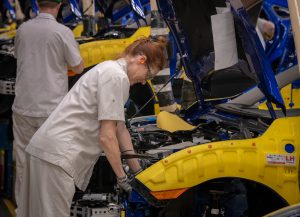
Photo Credit: Honda of Canada Mfg.
MRO: How many spare parts do you have, and how are they stored/replaced?
Riddall: Our central stores area carries over 62,000 items. This does not include vendor managed inventory available through our dispensing machines within the departments.
MRO: Can you speak about operations at the plant?
Riddall: To remain profitable and competitive, HCM has set very high production efficiency targets. For example, in our assembly departments we target less than seven minutes per shift of equipment downtime. This requires equipment efficiency, or uptime, approaching 100 per cent when multiple machines are connected in a synchronous configuration.
Given our need to continually improve, we continue to work together to relentlessly eliminate loss from our operations. This includes designing new equipment with increased reliability, availability, maintainability, and sustainability, evolving our maintenance programs to increase defect detection capability and, more importantly, empowering our associates to identify defects in their work areas. It is this combined effort, linked to our core values, that makes HCM successful, as we strive to be a company society wants to exist.

